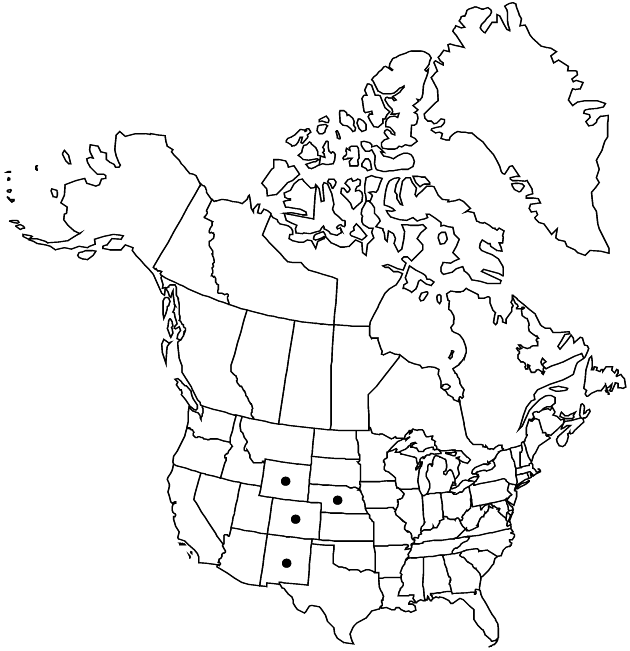Erigeron vetensis
Bull. Torrey Bot. Club 32: 126. 1905.
Perennials, 5–25 cm; taprooted, caudices with relatively short, thick branches, often retaining old leaf-bases. Stems erect, glabrous or sparsely hirsute to villous, densely glandular. Leaves basal (persistent) and cauline (petioles prominently ciliate, hairs spreading, thick-based); blades linear to narrowly oblanceolate, 20–90 (–150) × 2–4 (–7) mm, margins entire, faces glabrous or sparsely hispidulous, minutely glandular; cauline on proximal 1/3–2/3 of stems, gradually reduced distally. Heads 1. Involucres 4–8 × 7–15 mm. Phyllaries in 3–4 series (midvein region greenish), sparsely to moderately hispid or hispido-villous, minutely and densely glandular. Ray-florets 30–90; corollas usually bluish to purplish, sometimes white, drying pinkish, 6–16 mm, laminae reflexing. Disc corollas 3.2–5.3 mm (throats tubular). Cypselae 1.8–2.2 mm, 2-nerved, faces sparsely strigose; pappi: outer of inconspicuous, fine setae, inner of 18–25 bristles.
Phenology: Flowering May–Jul(–Aug).
Habitat: Dry, rocky slopes, roadsides, usually open exposures, ponderosa pine with juniper and/or oak, lodgepole pine, spruce-fir
Elevation: (1700–)2300–3300 m
Distribution

Colo., Nebr., N.Mex., Wyo.
Discussion
Erigeron vetensis is found in the Rocky Mountains.
Selected References
None.
Lower Taxa
"thick" is not a number.